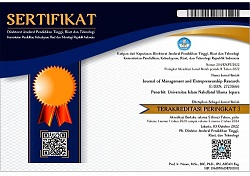Review Guidelines
Reviewer should use the following stage to review:
-
Read the abstract to be sure that you have the expertise to review the article. Don’t be afraid to say no to reviewing an article if there is good reason.
-
Read information provided by the journal for reviewers so you will know: a) The type of manuscript (e.g., a review article, technical note, original research) and the journal’s expectations/parameters for that type of manuscript.; b) Other journal requirements that the manuscript must meet (e.g., length, citation style).
-
Know the journal’s scope and mission to make sure that the topic of the paper fits in the scope.
-
Make your notes in the review form provided, such as: such as: a) Is the title of the paper concise enough and can describe the contents of the paper clearly?; b) Does the abstract have summarized briefly and clearly?; c) Does the introduction outline clearly?; d) Does the methode clearly about implemented to solve problems?; e) and others.
- Complete the manuscript review form provided.
- If necessary, add notes in the manuscript file (insert Comments Word) and then upload the document as an attachment to your review.
-
Give your initial impression. If the paper is:□ Acceptable with only minor comments/questions: solid, interesting, and new; sound methodology used; results were well presented; discussion well formulated with Interpretations based on sound science reasoning, etc., with only minor comments/questions, move directly to writing up review;□ A mixture somewhere in the range of “revise and resubmit” to “accepted with major changes” or you’re unsure if it should be rejected yet or not: It may be a worthy paper, but there are major concerns that would need to be addressed.
Please find the Guidance for Reviewers.
Reviewers will make a decision of:
(1) accept,
(2) minor revision,
(3) major revision, or
(4) reject.























